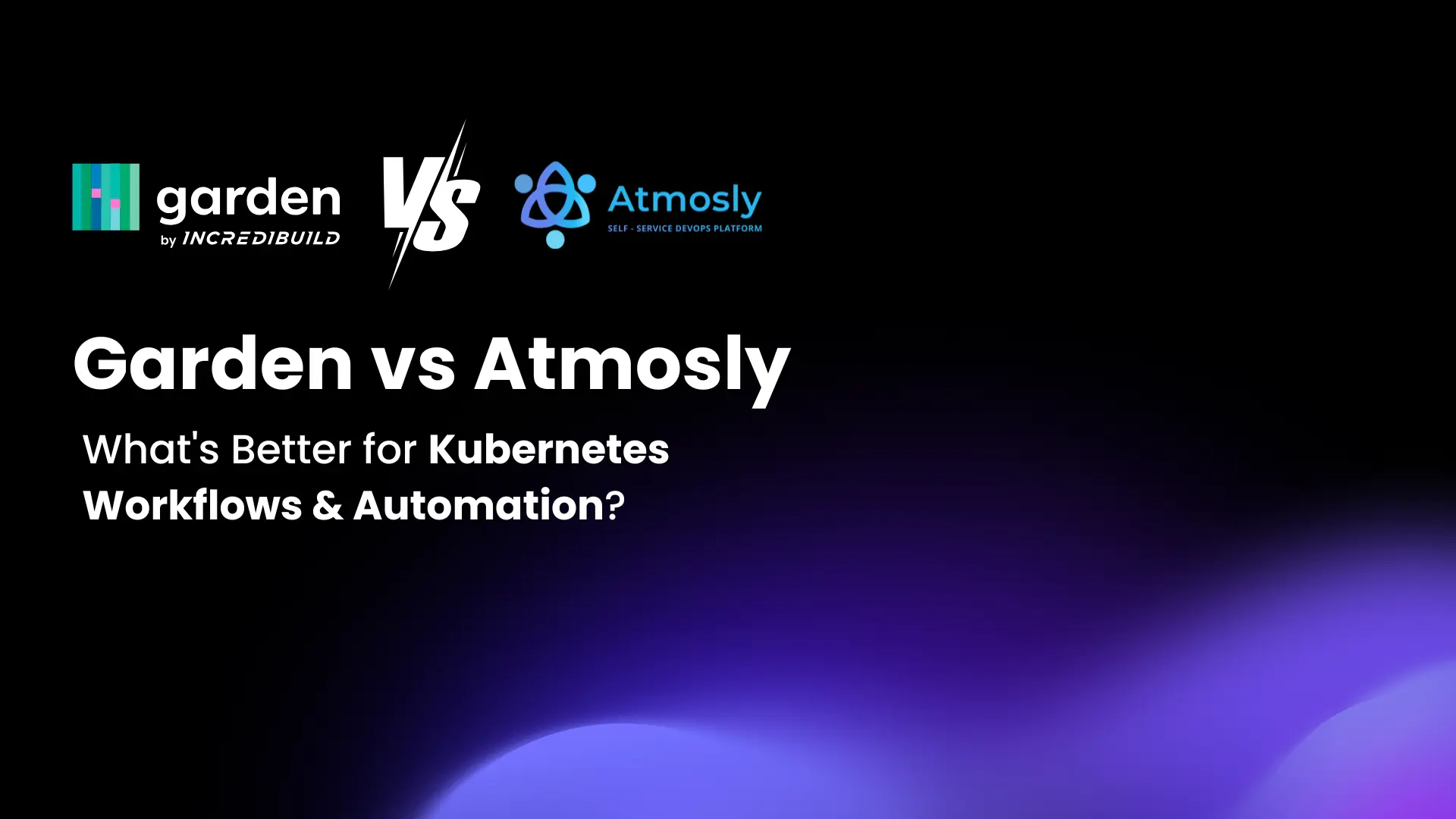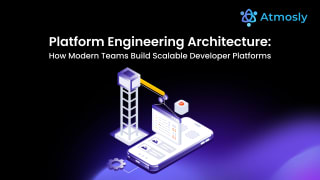Kubernetes has become the de facto standard for cloud-native application deployment. But managing complex Kubernetes-based workflows requires more than just cluster management it calls for automated CI/CD pipelines, environment provisioning, developer self-service, and GitOps best practices.
Two popular tools addressing these challenges are Garden and Atmosly. While Garden focuses on development workflow automation and testing for Kubernetes environments, Atmosly provides an end-to-end platform engineering experience built around GitOps, CI/CD, secrets, and environments.
In this article, we compare Garden vs Atmosly to help you decide which platform is better suited for your Kubernetes automation and DevOps goals.
Overview: Garden vs Atmosly at a Glance
| Feature | Garden | Atmosly |
|---|---|---|
| Focus Area | Kubernetes dev/test automation | Full-stack DevOps & Platform Engineering |
| GitOps Native | No | Yes |
| CI/CD Engine | Developer pipelines & tasks | Built-in CI/CD pipelines |
| Kubernetes Support | Yes | Yes |
| Environment Provisioning | On-demand for dev/test | Ephemeral & persistent environments |
| Secrets Management | External | Built-in vault with RBAC |
| Developer Experience | Local-first CLI & hot reload | Git-first, developer self-service |
| Best Use Case | Dev-time feedback for Kubernetes microservices | Full lifecycle automation from commit to prod |
What Is Garden?
Garden is an open-source development automation tool for Kubernetes. It aims to solve the “inner loop” pain points by helping developers build, test, and iterate faster across complex microservice architectures. It supports hot reloading, dependency caching, and test orchestration directly inside Kubernetes clusters.
Key Features:
- Build-once, deploy-anywhere workflow
- Hot reload and fast feedback loops for developers
- Kubernetes-native dev/test orchestration
- Plugin architecture for integrations
- Local-first CLI workflows
Strengths:
- Excellent for speeding up dev-time feedback and test cycles
- Reduces overhead for building/testing multiple microservices
- Lightweight and fast to adopt for developer teams
Limitations:
- No built-in CI/CD automation
- Not GitOps-native
- Lacks secrets management or role-based controls
- Requires integration with external tools for full lifecycle management
What Is Atmosly?
Atmosly is a DevOps automation and platform engineering platform designed for the full software delivery lifecycle from commit to production. It provides native GitOps support, CI/CD pipelines, environment automation, secrets management, and templates to enable true developer self-service.
Key Features:
- GitOps-native deployments with rollback and drift detection
- Built-in CI/CD pipelines compatible with GitHub Actions, GitLab, Bitbucket
- Automatic environment provisioning (ephemeral or persistent)
- Built-in secrets vault with policy-based access control
- Golden path templates for onboarding, app deployment, and platform tasks
Strengths:
- Complete out-of-the-box platform for DevOps teams
- Designed for scalable deployments, not just local workflows
- Focused on developer self-service, governance, and productivity
Limitations:
- Requires GitOps familiarity for advanced use cases
- Not focused on local-first dev/test cycles like Garden
Key Comparison Areas
1. Kubernetes Workflow Automation
- Garden shines during the development and testing phases of Kubernetes applications, enabling rapid feedback with hot reloading.
- Atmosly focuses on automating deployment workflows, infrastructure provisioning, and environment orchestration all post-commit.
✅ Verdict: Garden is ideal for early-stage Kubernetes development. Atmosly excels from testing to production deployment.
2. GitOps Support
- Garden does not provide GitOps features natively.
- Atmosly is fully GitOps-native, supporting declarative deployments, audit trails, and rollback.
✅ Verdict: Atmosly is the better choice for teams embracing GitOps principles.
3. CI/CD Pipeline Automation
- Garden handles build/test tasks but doesn’t offer traditional CI/CD pipeline management.
- Atmosly includes a CI/CD engine with pipelines, triggers, approvals, and environment awareness.
✅ Verdict: Choose Atmosly if you need end-to-end CI/CD without external tools.
4. Environment Provisioning
- Garden enables dev/test environments for local development within Kubernetes.
- Atmosly allows automated provisioning of preview, QA, staging, and production environments.
✅ Verdict: Atmosly offers more flexible and scalable environment automation.
5. Developer Self-Service
- Garden offers CLI-driven workflows for developers but lacks portal or Git-based self-service triggers.
- Atmosly supports Git-based deployments, reusable templates, and CLI/API integrations to empower developers without platform team bottlenecks.
✅ Verdict: Atmosly delivers a richer self-service experience for developers.
When Should You Choose Garden?
- You want a local-first tool to accelerate Kubernetes application development
- Your team works on many microservices and needs faster dev/test cycles
- You already have CI/CD and infra tools in place and want to complement them
When Should You Choose Atmosly?
- You want a complete DevOps and platform engineering solution
- You prefer GitOps-native workflows and built-in automation tools
- You’re building or scaling an Internal Developer Platform (IDP)
Final Verdict
Garden and Atmosly serve different stages of the Kubernetes application lifecycle.
- Garden is perfect for accelerating developer workflows in the inner loop.
- Atmosly is ideal for platform teams managing infrastructure, deployments, environments, and governance at scale.
If your goal is to enable full-cycle Kubernetes automation, developer self-service, and scalable CI/CD, Atmosly is the more comprehensive and future-proof choice.
Get Started with Atmosly
- Start a free trial and launch your first GitOps deployment
- Book a live demo and explore golden path templates
- Explore how Atmosly powers internal developer platforms






